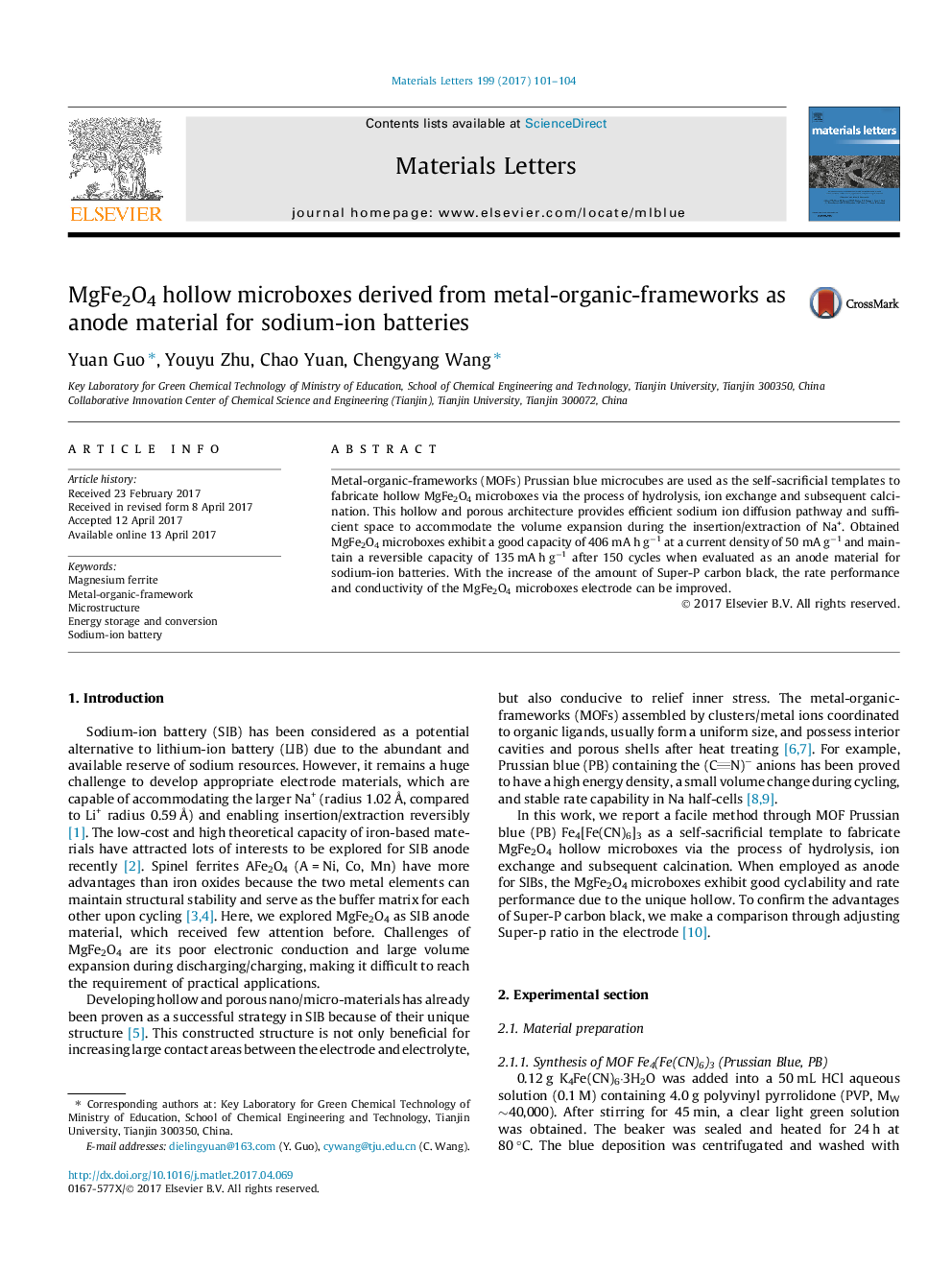| Article ID | Journal | Published Year | Pages | File Type |
|---|---|---|---|---|
| 5463100 | Materials Letters | 2017 | 4 Pages |
Abstract
Metal-organic-frameworks (MOFs) Prussian blue microcubes are used as the self-sacrificial templates to fabricate hollow MgFe2O4 microboxes via the process of hydrolysis, ion exchange and subsequent calcination. This hollow and porous architecture provides efficient sodium ion diffusion pathway and sufficient space to accommodate the volume expansion during the insertion/extraction of Na+. Obtained MgFe2O4 microboxes exhibit a good capacity of 406 mA h gâ1 at a current density of 50 mA gâ1 and maintain a reversible capacity of 135 mA h gâ1 after 150 cycles when evaluated as an anode material for sodium-ion batteries. With the increase of the amount of Super-P carbon black, the rate performance and conductivity of the MgFe2O4 microboxes electrode can be improved.
Keywords
Related Topics
Physical Sciences and Engineering
Materials Science
Nanotechnology
Authors
Yuan Guo, Youyu Zhu, Chao Yuan, Chengyang Wang,
